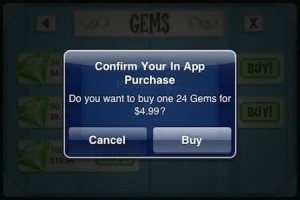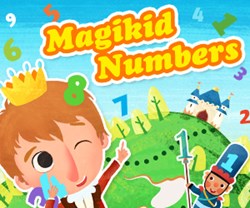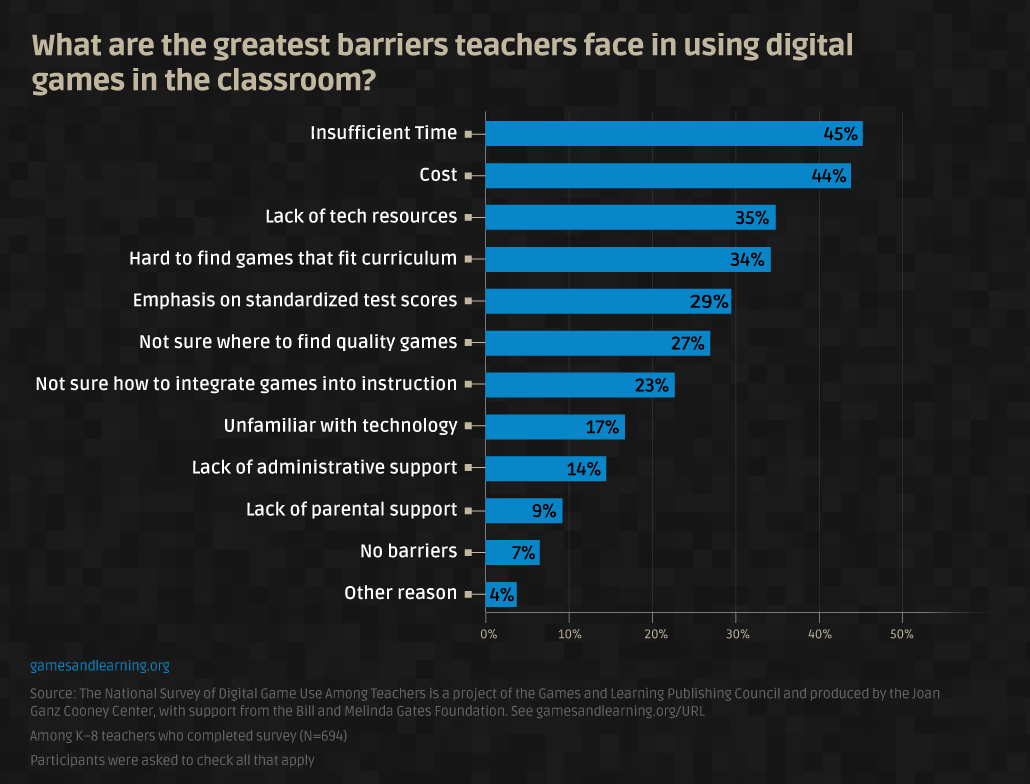
In-app purchases: Did you ask your parents first?
Learning game developers face a unique challenge when it comes to finding revenue streams for their products, having to balance the need to monetize with the ethical questions about how and when to sell to kids or their parents.
More than most other app sectors, learning games often require payment before the download. The reason most developers cite for this approach is an uneasiness they hear from parents when it comes to in-app purchases targeted at kids.
On the one hand, in-app purchases have emerged as a primary source of revenue from apps generally. Late last year, analysis of the app market found that 76 percent of revenue in the U.S. was coming from in-app purchases – and that number shot up to 90 percent in Asia.
But as that financial source grew so did concerns about the ease with which kids might purchase things in apps. A deal between Apple and the Federal Trade Commission earlier this year emphasized, “especially when it comes to merchandise geared toward kids, think through your processes in advance to minimize the risk that a child’s quick click could result in hefty unauthorized charges unknown to the parent until they get the bill.”
So how does a game developer find a way to make money off a learning game without running into trouble? According to developers we’ve talked with there is no one answer to that question and is instead threaded together by considering their overall business strategy and what has worked (or not) before.
It’s against this backdrop that we have heard the business and pricing strategies of dozens of developers and the most remarkable thing is the degree to which there is no consensus around best ways to monetize learning games.
Paid Download
The most straightforward model is to simply charge parents to purchase the game at the very beginning of the whole process.
- Pros
The game is totally untouched by the business strategy.
Unlike other approaches, the game itself is untouched by the business side of the equation. Game mechanics, levels of play and the educational components are available to the child from the moment the game is downloaded.
It ensures every customer has financially supported your operation.
Paid downloads are done selling. They don’t need to convince or entice further financial commitments and similarly the game does not feel pressure to tease the pay content or create a real or artificial need to level up using online currencies.
- Cons
Paid apps rely heavily on successful marketing or a larger brand.
In addition to simply being discovered by a customer you must also convince them your paid app is better than the countless free apps out there.
“I don’t think I’ll do many pay apps again in the future, the numbers behind them just aren’t there at all,” Brainbean developer Tanner Christiansen said. “Like I mentioned: the app store is too over-saturated and it’s extremely difficult to stand out.”
Customers expect more and more apps to be free.
But those selling paid downloads may feel a bit like they are swimming against the current which even Toca Boca’s Björn Jeffery admits is flowing towards freemium.
“Everything is going to freemium, especially for adults… [W]hen you know the level of quality app you get for free for yourself that changes your perception of what’s worth paying for then?” he said. “The perception from parents changes things a lot so you have to be aware of what you are doing anyway.”
Making this style of monetization works requires developers to be thinking in terms of a series of apps. Each app can stand on its own, but revenue only comes in once and so repeat customers of different products is how this plan creates multiple purchases from a customer.
The Trial Period
Many companies are trying to get the promotional benefits of a free download without raising real concerns about multiple in-app purchases.
Most games like this allow kids to play a few levels for free, but to unlock the rest of the game they must purchase the game. Essentially the difference between Angry Birds free and the paid version.
- Pros
You can rack up a lot of downloads in a short period of time.
Independent developer Tanner Christensen used his app Brainbean to raise his profile and making it available for free was central to spreading the word about his work.
“The freemium model worked well for exposure, and even if the app isn’t making tremendous amounts of money, it has given me an opportunity to connect with more than half a million people around the world. Not many other developers can say that their app will reach one million downloads within four months,” he said. “Taking that opportunity and utilizing it to create exposure around future app updates or my next project is huge, I think.”

Magikid Numbers has ranked in the top 10 apps in 22 countries and seen a quarter-million downloads.
It allows the game to be your marketing tool.
But, according to some like MagiKids Sean Hurley, it is more than a billboard for a firm, it is a sound business strategy. Hurley argued it hooks the user by allowing them to actually play the game.
“We grew into this model based on user feedback and our download/revenue numbers. A free app is going to get many more downloads than a paid app, that’s just a fact about the App Store, and having users actually play the app is our best sales tactic,” he said.
- Cons
Downloads don’t equal money.
Converting the free download to purchase the “full version” of a game is a difficult case to make. As much work as a developer puts into getting the user to click download, the next step of getting them to pay for something they already have on their phone is an even taller mountain to climb, said multiple developers.
You can’t tack freemium on a game.
We have heard from developers who have created additional “add-on” packs to a game, but Jeffery, for one, believes to make it work, freemuium must be built into the game from the very beginning.
“It’s not you just add an in-app purchase to your app and the money starts flowing in… Being successful with freemium almost requires that you to design from the freemium model from the beginning. It’s not something you can apply later. I’m starting with freemium and then I am building a game on top of the freemium business model. That’s when you are really successful,” he said.
The mistake I have seen done many times is people have a game in the kids space or in the adult space and then they add freemium as an afterthought and then you are just left with basically no business model at all. It’s free so you’re making no money up front but you’re also not selling anything in it. It’s a very tricky thing.
Björn Jeffery, CEO, Toca Boca
Multiple In-app Purchases
The last major philosophy is to try and entice users to repeatedly purchase items within a single game.
Unlike the other strategies that require a developer to convince users to purchase multiple apps to create ongoing revenue from that customer, true in-app purchase strategies encourage repeated purchases to unlock layers, purchase online currencies like gems or speed up game play.
His work in the learning game arena has convinced Christiansen that this is the only really workable model.
“What’s coming to light now is that freemium with one-time purchases is not a very sustainable model. It makes more sense to have ‘consumable’ purchases, which can be added bonuses in the game that players can consume and then re-purchase as necessary,” he said, adding, “If I had to do Brainbean all over again, the only thing I would change would be experimenting with consumable IAP. Having something that players can purchase with a real benefit, but then have to purchase again if they enjoy it, would likely increase my total monthly revenue and make it tremendously easier to keep working on the app or future apps.”
- Pros
Repeated trips to an individual well.
The most obvious is the possibility of continued revenue from one person. If the game is constructed in such a way as to encourage that ongoing buying of additional resources or levels a single game can generate dozens of, sometimes substantive, purchases.
Your entire business can be one game.
There is no need for this larger series of games or the development of a brand in this case. A single game can be the business strategy of a company.
-
Cons
Parent blow-back.
Aiming for multiple in-app purchases is the most controversial business strategy. The worry is that how you structure the game and the in-app purchases could be deceiving.
For Jeffery, it’s important any strategy like this be built around purchasing additional levels or powers within a game and not something fluid like online currency.
“I think virtual currency is quite a deceitful way of playing with children’s perception of money,” he said. “Arguably a lot of adults have trouble deciphering how 100 gems is actually worth, but kids certainly do. So that is one thing: no consumables.”
Possible government interest.
Whether it is the Apple-FTC deal or possible new regulations, this business strategy is getting an increasingly hard look from the authorities.
“Certainly regulators are taking a closer look, and frankly I’d have to say rightly so,” David MacQueen, London-based director of wireless media strategies at Strategy Analytics, told Mobile Marketer. “As is often the case with new business models, although there are plenty of reputable companies using the model effectively, there are some mistakes being made and also some bad practice going on.”’
Keeping an Eye on Schools
Since our focus is on learning games, one the biggest potential markets is K-12 audience. Learning games aimed for school adoption should keep a few other things in mind as well.
First from the teacher perspective, there is some hesitation to shell out cash for an app to use in school.

Fully 44 percent of teachers said in a national survey released this summer that cost was one of the more significant barriers to the use of games in the classroom and in another part of the report on 4 percent of teachers said they would use their own money for an app.
This has led many teachers to seek out free versions of games or tools and to limit themselves in what they may explore for use in the classroom.
Still some tech providers are working to address the challenge of getting teachers to open up their wallets for class.
Google Play has perhaps made the most significant effort, tackling the logistical challenge that allows teachers to use purchase orders inside Google Play for Education.
“Credit cards are what teachers use when they don’t want to get reimbursed. So we built purchase orders,” Rick Borovoy, project lead, said.
